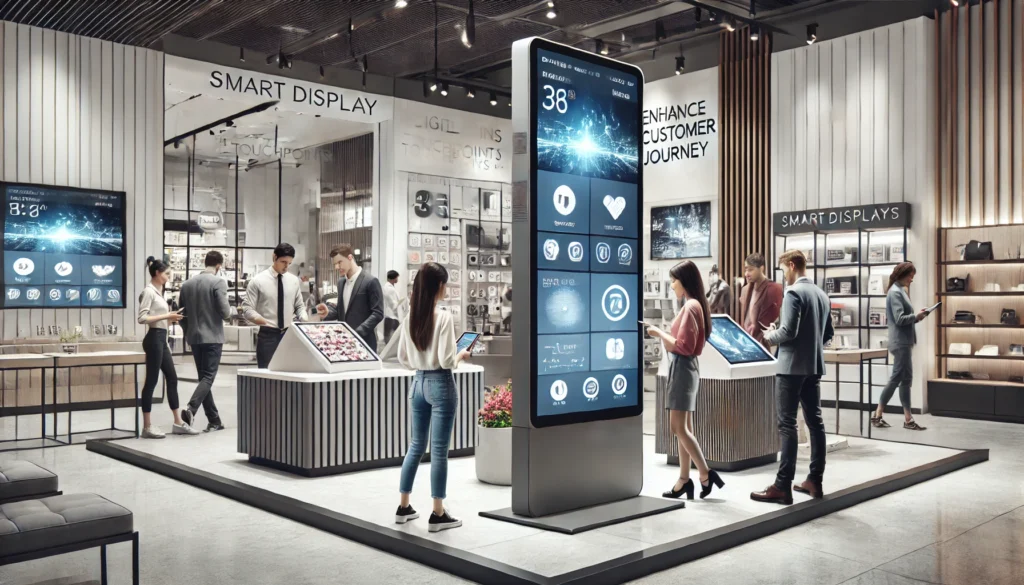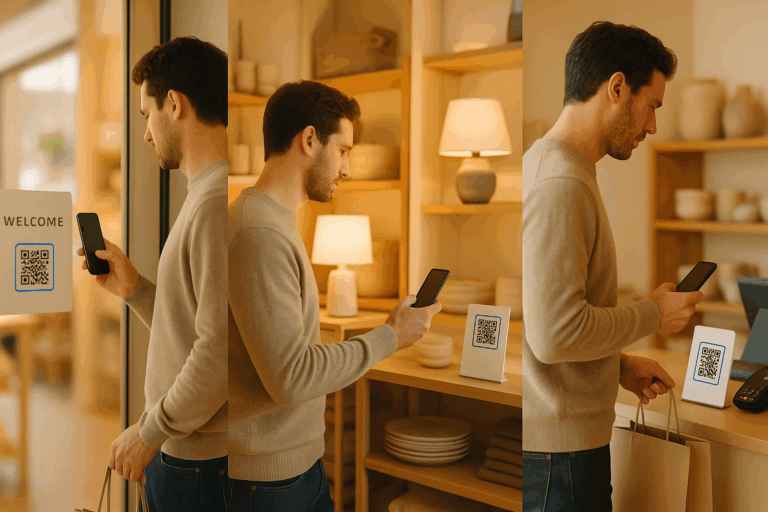Many people hear “customer journey” and make an assumption that it’s the route the shopper takes around a store, but they’d be incorrect. The process of analysing retail customer journey starts before a customer even sets foot near a shop and is all based upon engagement.
This journey includes everything from the initial triggers or needs that lead a customer to consider visiting the store, their expectations based on previous experiences or brand perceptions, the interactions they have with the store both online and offline before visiting, and the preparation or planning they undertake prior to their visit.
Essentially, the entire process of customer engagement leads up to and includes their physical visit to the store. Being able to analyse the retail customer journey is important to understand and connect with your customer base.
Understanding the Retail Customer Journey
The customer and their journey can be very diverse depending on several different factors. Age, location, socio-economic background, previous experience can all play a part in how they like the shore and engage with a brand. In the UK, for example, 61% of consumers prefer shopping in physical stores, indicating a strong inclination towards in-person experiences. This is also reflected in Germany, where a SOTI Research study found 68% of German shoppers also prefer the in-store experience.
This preference also varies across age demographics, with 69% of Boomers primarily shopping in-store, valuing the tactile nature of products and personal service. Gen-Z also seek in-store experiences, choosing to find instant gratification of buying in a shop rather than waiting for someone to deliver to them – something that indicates online retail being “normal” and not a new development as it was for Millennials and Gen-X. In fact, 30% of Gen-Z shop exclusively in-store.
These are just a few examples of data sets that retailers can look into to analyse and help tailor the in-store customer journey. Analysing the diverse preferences and behaviours allows retailers to address the varying needs and expectations of different age groups or socio-economic backgrounds while integrate technology and services that enhance the physical shopping experience.

Omnichannel Analytics
Given the diversity of customers that retailers face, it is clear that retailers need to adopt a more comprehensive approach to understand and cater to varied customer journeys. This is where omnichannel analytics come into play, offering a powerful tool to analyse and integrate these diverse experiences across multiple channels. By bringing together data from a range of sources, you can build a more detailed and richer picture that fills in any gaps from one data set.
Using retail channels such as online, in-store, social media, mobile apps, and more, retailers can gain a more comprehensive understanding of customer behaviour and preferences. This allows for more contextual analysis and better understanding. Omnichannel is important because it offers:
A Unified Customer View:
Omnichannel analytics provide a holistic view of the customer, breaking down silos between different shopping channels. This unified perspective is crucial for understanding the retail customer journey, from online browsing to in-store purchasing.
Personalised Customer Experiences:
By analysing data across channels, retailers can tailor experiences to meet individual customer needs and preferences. Personalisation can range from product recommendations to customised marketing messages, all aimed at enhancing the customer’s engagement with the brand.
Strategic Decision Making:
Omnichannel analytics empower retailers to make informed decisions based on comprehensive data. This includes store layout optimisation, inventory management, and targeted marketing campaigns, all designed to improve customer satisfaction and drive sales.
Real-Time Insights:
With the technological advancements, omnichannel analytics can provide real-time insights, allowing retailers to respond quickly to customer behaviours and market trends. This agility is crucial in today’s fast-paced retail environment.
Improved Customer Retention:
By delivering a seamless and personalised shopping experience across all channels, retailers can foster customer loyalty. Satisfied customers are more likely to return and recommend the brand to others.
Adding Digital Touchpoints into the Retail Customer Journey
Including digital touchpoints can enhance the visibility of the customer journey in a retail environment. A touchpoint in a store allows for an easy-to-access opportunity for customers to interact and thus provide valuable data to the retailer. For example, a smart display or a kiosk with interactivity inside a store can offer customers personalised product recommendations, promotions, information and even assistance. While helping the customer, it also serves to collect data on how a customer likes to interact, what their preferences are, and offers a dual purpose.

When analysed, the data reveals intricate details of customer behaviour and other patterns. What popular products and features are used, and even which digital touchpoints are used more frequently than others? Retailers can use the collected in-store customer data to enhance the shopping experience, add a more interactive and engaging experience and add value to the retail customer journey, and improve customer retention.
When you take the data from these interactive digital touchpoints and merge it with the omnichannel analytics, as a retailer, you are able to get a more nuanced and detailed understanding of your customers. You can drill down and create personalised offers and strategies that are data-driven.
Making The Retail Customer Journey Count
Analysis of the customer journey in a retail store through the lens of omnichannel analytics and digital touchpoints is important for retailers.
Collecting and then analysing the customer journey helps retailers better understand and meet their customers’ unique needs, driving loyalty and growth in a competitive marketplace.
refive provides smart in-store touchpoints that simplify the collection and analysis of these data points throughout the retail customer journey, providing actionable insights and data-driven strategies to enhance customer experience and retention. Knowing how to collect, analyse and act on the key data gives you an opportunity to stay ahead in the dynamic retail landscape.
Reach out to refive and discover how our in-store digital touchpoints can help you analyse the retail customer journey.









